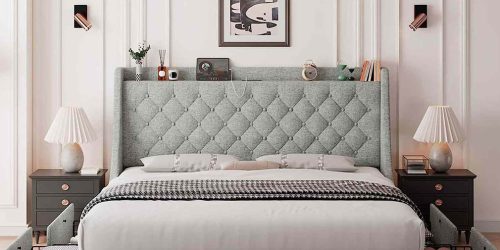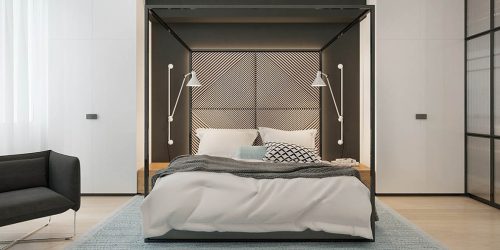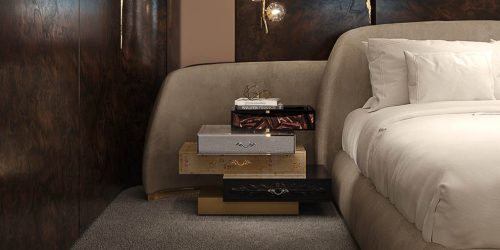Transform Your Bedroom into Your Personal Sanctuary
Your bedroom should be more than just a place to sleep. It’s the one space in your home where you can truly relax, recharge, and unwind after a long day. It’s a personal sanctuary, a place to escape from the world, where comfort and peace reign supreme. Whether you’re looking for a cozy retreat, a minimalist haven, or a luxurious escape, designing a bedroom that reflects your style and promotes well-being is key to creating the perfect environment for rest and relaxation.
1. Create a Calming Color Palette
The foundation of any relaxing bedroom design starts with the color palette. Soft, calming colors can help create an atmosphere conducive to rest. Think pastel shades, muted earth tones, or serene blues and greens. These colors not only help to set the tone for a peaceful night’s sleep but also create a harmonious and tranquil environment that encourages relaxation.
If you prefer bolder colors, you can use them in moderation, such as through accent walls or accessories like pillows, throws, and rugs. However, avoid overly stimulating hues like bright reds or neon shades, as they can make it harder to unwind.
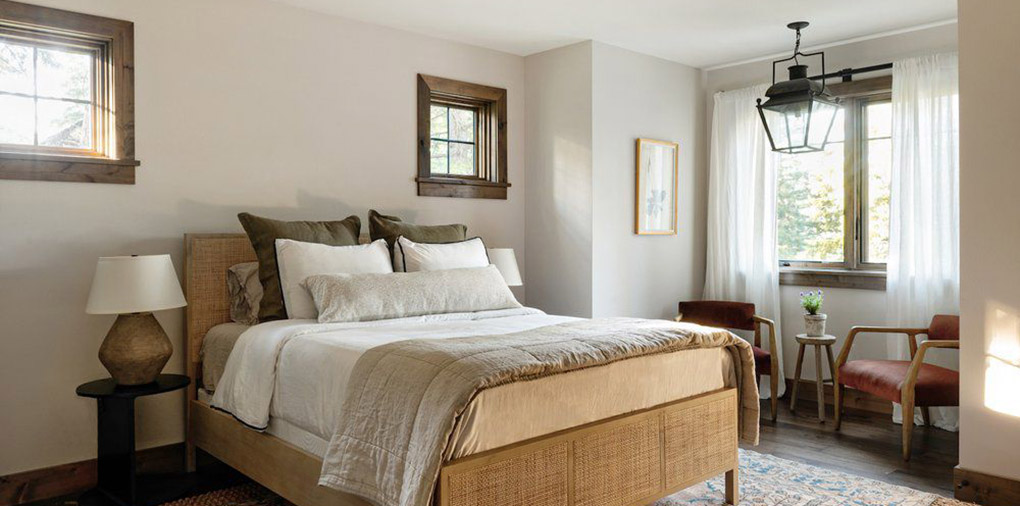
2. Invest in High-Quality Bedding
One of the most important aspects of your bedroom is your bed. A high-quality mattress is the key to ensuring you get restful sleep, but equally important are your sheets, pillows, and blankets. Opt for soft, breathable fabrics like Egyptian cotton, linen, or bamboo for your bedding. These materials are not only comfortable, but they also help regulate temperature and wick away moisture, ensuring you stay cool in the summer and warm in the winter.
Don’t forget about pillows! A variety of pillows—firm, soft, and memory foam—can provide the support your neck and head need. Choose the ones that best suit your sleeping style, whether you’re a back sleeper, side sleeper, or stomach sleeper.
3. Maximize Natural Light
Natural light plays a vital role in maintaining a healthy circadian rhythm, which helps regulate your sleep cycle. To bring in more natural light, keep your windows unobstructed by heavy drapes or furniture. If privacy is a concern, opt for sheer curtains or blinds that let in the light while still providing coverage.
In addition to natural light, consider adding artificial lighting that mimics natural light for those times when the sun isn’t shining. Full-spectrum light bulbs or smart lighting systems that adjust to the time of day can create a soothing atmosphere in the evenings.
4. Declutter and Simplify the Space
A cluttered room can lead to stress and anxiety, so one of the first steps in creating a peaceful sanctuary is to declutter your bedroom. Start by removing unnecessary items and organizing your belongings. Use stylish storage solutions, like baskets, shelves, or under-bed storage, to keep things tidy without sacrificing style.
The minimalist approach works wonders in a bedroom, where simplicity and tranquility should be prioritized. Keep only the essentials within reach, such as a lamp, a good book, or a plant. This doesn’t mean you need to sacrifice personality—just focus on quality and meaningful items that bring you joy.
5. Incorporate Cozy Textures
Textures play an essential role in creating a warm and inviting atmosphere. Soft, plush textiles can make your bedroom feel like a cozy haven. Consider layering different textures in your bedding, rugs, and curtains to create depth and interest. A velvet throw blanket, knitted pillows, or a wool rug can add instant warmth and comfort to the space.
Don’t overlook the power of a good duvet or quilt either. A comforter or quilt in a soft, inviting material will make it hard to resist crawling into bed at the end of the day. Consider the tactile experience of your space—the feeling of a soft fabric beneath your fingers can have a profound effect on your comfort and relaxation.
6. Create a Zen Corner
A bedroom sanctuary isn’t just about the bed—it’s about carving out spaces within the room that promote peace and relaxation. One way to do this is by creating a “Zen corner,” a space dedicated to meditation, yoga, or reading. A comfy armchair, a small table, and some calming decorations like candles or plants can transform a corner of your bedroom into a soothing retreat.
Consider adding a calming fountain or a salt lamp to the space to elevate the sense of peace. Essential oils or incense can add a pleasing scent to your room, further enhancing the relaxing atmosphere.
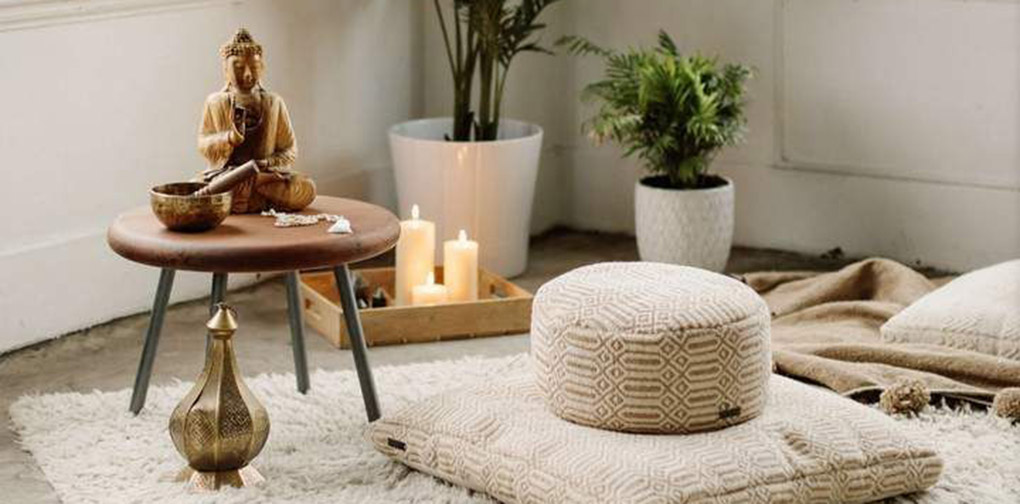
7. Add Personal Touches
While you want your bedroom to be a relaxing space, you also want it to feel like your own. Personal touches are essential in making the space truly yours. Add meaningful artwork, framed photographs, or objects that hold sentimental value. These items should reflect your personality and style but still contribute to the overall serene atmosphere.
A personal touch could also be found in the textiles you choose. A custom-made quilt, hand-woven blanket, or unique throw pillows can bring your personality into the space without overwhelming it.
8. Incorporate Nature
Bringing a bit of nature into your bedroom can help make it feel more tranquil and grounded. Houseplants are not only aesthetically pleasing but also improve air quality. Low-maintenance plants like succulents, snake plants, or pothos are perfect for the bedroom, as they require minimal care while adding a touch of green to your space.
If you don’t have a green thumb, consider adding a few flowers or natural materials like wood and stone in your décor. A wooden bed frame, a bamboo chair, or stone decorations can help ground the space and give it a natural, organic feel.
9. Consider Aromatherapy
Aromatherapy is a powerful tool for relaxation and sleep. Scents like lavender, chamomile, and sandalwood are known for their calming properties and can help promote a restful environment. Consider investing in a diffuser to disperse essential oils into the air, or opt for candles with soothing scents.
Adding scent to your bedroom not only enhances the atmosphere but also creates a ritual. Lighting a candle or diffusing essential oils before bed can signal to your body that it’s time to relax and prepare for sleep.
10. Smart Technology for Comfort
While the goal is to create a peaceful and serene environment, technology can still play a role in enhancing the comfort of your bedroom. Smart lighting, for instance, can be programmed to adjust throughout the day to mimic the natural progression of light. Smart thermostats can ensure that your room is the perfect temperature for sleep, while noise-canceling devices or white noise machines can help block out unwanted sounds.
Investing in sleep technology, such as sleep trackers, can also provide insight into your sleep patterns and help you improve your rest. However, be sure to minimize the use of electronic devices that emit blue light (like phones and tablets) before bedtime, as they can interfere with sleep quality.
11. Keep It Organized with a Functional Layout
When designing your bedroom, it’s important to consider the layout. The placement of furniture should create a sense of balance and flow. Keep the bed as the focal point of the room, and arrange other furniture pieces around it in a way that feels natural and easy to move around.
Consider the importance of symmetry in the layout. While it’s not necessary to have everything perfectly balanced, symmetry tends to create a more visually calming environment. This could mean placing matching nightstands on either side of the bed or keeping furniture in proportion to the size of the room.
Transforming your bedroom into a personal sanctuary is a process that requires careful thought and consideration. It’s about more than just aesthetics—it’s about creating a space where you feel truly at peace and can fully unwind. By focusing on comfort, functionality, and your personal style, you can craft a bedroom that feels like your own private retreat. Whether through soft lighting, calming colors, or cozy textures, the key is to make your bedroom a space that nurtures your mind, body, and soul.
